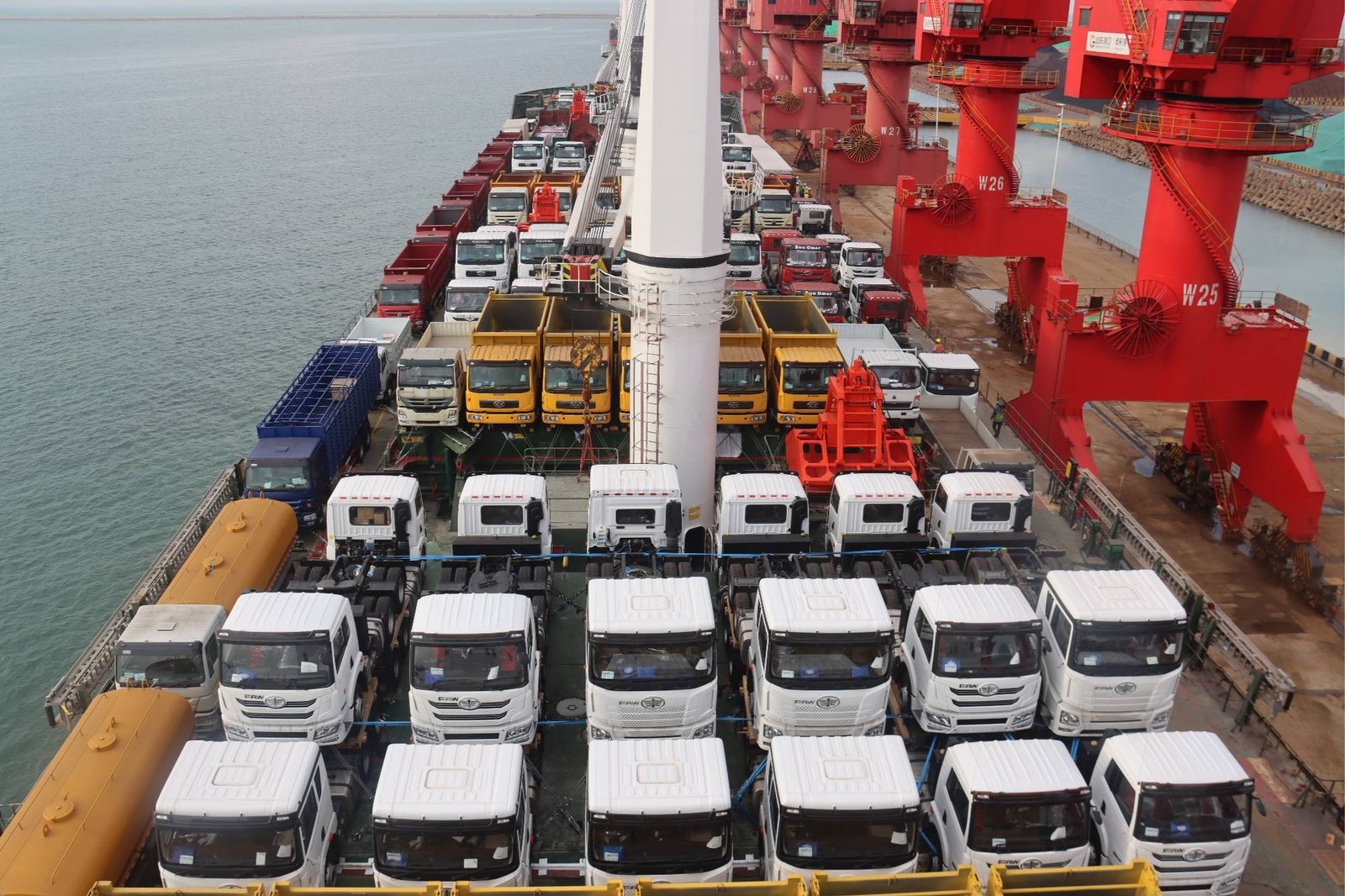In recent years, China’s truck manufacturing industry has demonstrated strong competitiveness in the international market, with exports steadily increasing. Thanks to their cost-effectiveness, technological innovation, and customized services, Chinese truck brands are gaining favor among overseas customers.
Market Performance Highlights
1.Growing Export Volume: In 2022, China exported over 200,000 trucks, a 35% year-on-year increase, primarily to emerging markets such as Southeast Asia, Africa, and Latin America.
2.Breakthrough in Premium Markets: Developed regions like Europe and Australia have begun purchasing Chinese electric and smart trucks in bulk.
3.Brand Ecosystem Formation: Leading companies such as FAW Jiefang, Dongfeng, and Sinotruk have established comprehensive overseas sales and service networks.
Core Competitive Advantages
Price Advantage: 30–50% lower than comparable European and American models.
Technological Upgrades: New energy trucks offer a range of up to 400 km, with smart driving technology reaching L3 autonomy.
Localization Adaptations: Specialized models, including right-hand drive and desert-ready versions, tailored to different markets.
After-Sales Service: Overseas spare parts hubs ensure 24/7 customer support.
Success Stories
1.Mexico Market: Sinotruk achieved annual sales exceeding 8,000 units, capturing 25% market share.
2.Saudi Market: Shaanxi Heavy-Duty Trucks became the preferred choice for oil transportation.
3.Chile Market: Foton’s “Zhilan” electric trucks secured a government order for 2,000 units.
Future Trends
With the deepening of the Belt and Road Initiative, China’s truck exports will exhibit three key developments:
1.Accelerated New Energy Transition: Electric and hydrogen-powered trucks expected to account for 30% of exports by 2025.
2.Smart Connectivity Upgrades: 5G remote monitoring and autonomous driving features becoming standard.
3.Full Value Chain Expansion: Shifting from vehicle sales alone to technology exports and localized production.
China’s truck manufacturing industry is evolving from “competing on price” to “creating value,” continuously enhancing product quality and service to establish a new “Made in China” benchmark in the global commercial vehicle market. Once a labor-intensive sector, it has now become a vivid example of China’s industrial transformation and upgrading.

